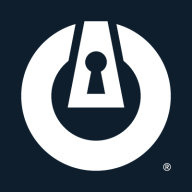

Sophos EPP Suite and ThreatLocker Zero Trust Endpoint Protection Platform compete in the endpoint protection category. Sophos seems to have the upper hand with its comprehensive threat detection and ease of use, while ThreatLocker stands out with its zero-trust strategies and application control.
Features: Sophos EPP Suite offers comprehensive endpoint protection with antivirus, data loss prevention, and AI-powered threat detection. It provides centralized management and synchronized security across devices. ThreatLocker focuses on application control and zero-trust strategies, emphasizing allowlisting, learning mode, and comprehensive user activity visibility.
Room for Improvement: Sophos users report issues with technical support response times, high resource consumption, and complex rule settings. They also find the management interface and reporting less intuitive. ThreatLocker could improve its user interface, manage update distribution better, and enhance training resources. Reporting and visibility in support tickets also need attention.
Ease of Deployment and Customer Service: Sophos provides flexible deployment options across on-premises and cloud environments, though support experiences vary. ThreatLocker offers diverse deployment environments, including hybrid options, and is noted for its responsive customer service, especially with its Cyber Hero support. However, some users still face challenges with training and support availability.
Pricing and ROI: Sophos is viewed as cost-effective with competitive pricing and various licensing options, though costs can rise with advanced features. ThreatLocker pricing is considered fair and flexible, benefiting from customized deals that suit MSPs. Both products offer strong ROI by enhancing security features and supporting productivity and data protection. Sophos offers specific discounts, while ThreatLocker uses a tiered pricing structure aimed at delivering value with security benefits.
If something were to happen without ThreatLocker, the cost would be huge, and thus, having it is definitely worth it.
The main return on investment is peace of mind, knowing that with ThreatLocker on any endpoint, it will almost always block all malicious code or exploits, even zero-day exploits.
It keeps malware, Trojans, and ransomware at bay.
I rate Sophos support as excellent, giving it a ten out of ten.
They have introduced a dedicated role called Technical Account Manager (TAM) for every partner.
The Sophos people here in South Africa are very helpful.
They have been very responsive, helpful, and knowledgeable.
I would rate their customer support a ten out of ten.
Their support is world-class.
I started off with just the servers, and within a month and a half, I set up the entire company with ThreatLocker.
It seems to primarily operate on the endpoints rather than at a central location pushing out policies.
I would rate it a ten out of ten for scalability.
For five years, we have not had a problem.
Once deployed, it downloads the policies locally, so even if the computer doesn't have internet, it doesn't matter.
It has been very stable, reliable, and accessible.
The enterprise integration is very poor, requiring a lot of manual work.
Users have noted that daily upload limits per device, overall data lake storage capacity tied to licenses, and daily API query limits can be restrictive.
I think there should be templates in place so I do not have to make everything from scratch; having templates for NATing, de-NATing, and LAN to WAN rules would save us time.
Controlling the cloud environment, not just endpoints, is crucial.
This is problematic when immediate attention is needed.
Comprehensive 24-hour log monitoring is a valuable enhancement for both business and enterprise-level users.
The cost is reasonable and cheaper than other alternatives.
After conversations with other partners, it became clear we underpriced it initially, which caused most of our issues.
We are moving towards the Unified solution, where they basically bundle everything together, providing us better stability with the ability to bring in new product offerings without having to go back to the customer and say, 'This is going to cost you.'
I had a really good deal at the time, and it continues to be cost-effective.
Key features for comprehensive detection and prevention include advanced threat prevention, ransomware protections, exploit prevention, and AI-powered detections.
Web filtering helps provide protection by allowing me to block unwanted and unauthorized websites from Sophos EPP Suite, which helps prevent unauthorized intrusion, thus keeping our organization servers secure.
With the reseller management, I can manage multiple clients without having to log in to each client.
ThreatLocker Zero Trust Endpoint Protection Platform's ability to block access to unauthorized applications has been excellent.
It protects our customers.
The major benefit is fewer breaches overall, as nothing can be run without prior approval. This helps my company protect its data and secure itself effectively.
| Product | Market Share (%) |
|---|---|
| ThreatLocker Zero Trust Endpoint Protection Platform | 0.9% |
| Sophos EPP Suite | 1.0% |
| Other | 98.1% |


| Company Size | Count |
|---|---|
| Small Business | 44 |
| Midsize Enterprise | 7 |
| Large Enterprise | 14 |
| Company Size | Count |
|---|---|
| Small Business | 32 |
| Midsize Enterprise | 4 |
| Large Enterprise | 3 |
ThreatLocker Zero Trust Endpoint Protection Platform offers robust endpoint security through application control and allowlisting, safeguarding servers and workstations from unauthorized software execution.
ThreatLocker Zero Trust Endpoint Protection Platform provides extensive application control with features like ring-fencing and selective elevation, ensuring meticulous execution management. Offering learning mode and extensive support, it integrates threat detection and activity monitoring to enhance compliance, reduce costs, and bolster cybersecurity through alerts and approvals. Despite its strengths, there are areas for improvement in training flexibility, policy updates, and interface enhancements, along with challenges in handling non-digitally signed software. Deployed across environments, it works well with existing cybersecurity instruments for real-time threat prevention.
What are the top features of ThreatLocker?ThreatLocker Zero Trust Endpoint Protection Platform is widely implemented to safeguard IT infrastructures against unauthorized access and application use. In sectors where data security is paramount, this platform enables users to prevent unauthorized software installations and control device applications, ensuring real-time threat prevention and compliance with industry regulations.
We monitor all Endpoint Protection Platform (EPP) reviews to prevent fraudulent reviews and keep review quality high. We do not post reviews by company employees or direct competitors. We validate each review for authenticity via cross-reference with LinkedIn, and personal follow-up with the reviewer when necessary.